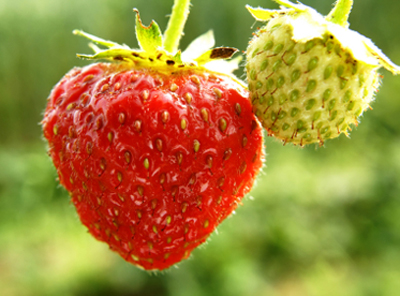A scientist team at National Physical Laboratory (NPL) has come up with a novel imaging robotic technique for identifying ripe strawberries from the unripe ones. The robot will be very useful in the agricultural industry by helping reduce wastage of food and enhancing productivity.
 Ripe and unripe strawberies
Ripe and unripe strawberies
The team has completed a series of tests on strawberries and other crops successfully. The software is built on the logic of learning from past experiences.
The developmental work began in the year 2009 when they first tried to identify the ripeness of cauliflowers, identifying the ripe ones was a problem for farmers as they were covered by leaves. The project was a success but the sale was stalled by cauliflower demand reduced. Dr. Richard Dudley conceptualized the technique and later extended the technique to other fruits and vegetables. He explained that identification of strawberries was relatively easy due to the dry leaves and the high water content in the fruit. For identifying the ripe fruit NPL has utilized radio frequencies, terahertz, microwaves and far-infra red. These four bands in the electromagnetic spectrum are capable of penetrating into the layers of the crop without causing damage to the fruit or vegetables. The technology can identify if the crop satisfies preset criteria for ripeness cost-effectively. The software that drives the identification process has also been developed at NPL. By altering the microwave system the scientists can determine the structure of different crops. Previously measured values taken by observing real crops for size and ripeness level has been fed into the system in the form of an algorithm. The imaging techniques that are being used in this device can be extended for other purposes such as waste management, where it can help in sorting waste into categories like plastics, paper, wood to allow efficient burning to generate energy.